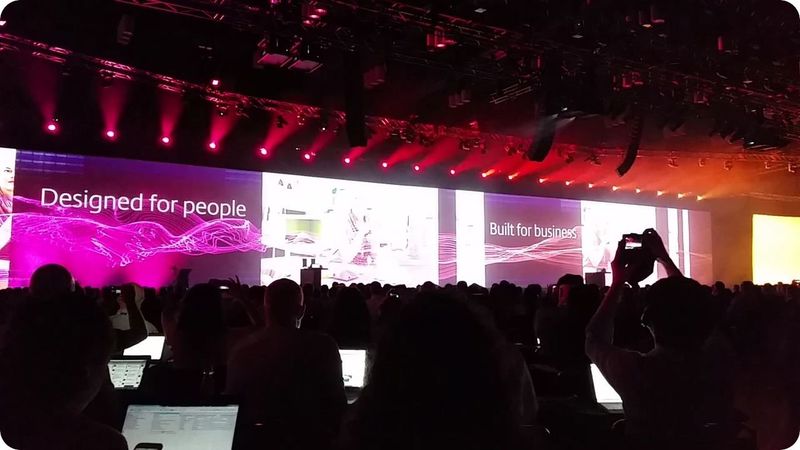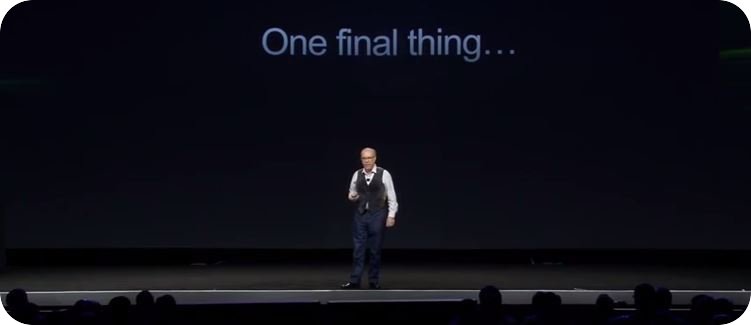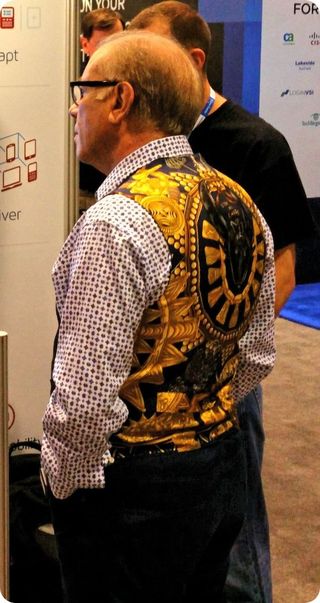Enterprise Mobility & the Connected Worker Blog
Event Recap – Citrix Synergy
Citrix succeeded in demonstrating it can innovate on application delivery and customer service

I had the pleasure of attending Citrix's Synergy customer event this past week in Orlando Florida. The event was well attended (about 7.5K on-prem, and roughly 5K remote attendees) and featured a nice mix of vendors on the show floor that ranged from small startups to heavies such as Cisco, IBM, Intel and Microsoft. After narrowly missing its Q1 numbers a few weeks ago, Citrix needed to demonstrate that its recent restructuring and organizational changes were positives; and that they were helping to transition the business to its next phase of growth. The company's GM and CSO for Workspace Services Geir Ramleth summed it up nicely when he said: "This is a new Citrix — we're moving in a more cohesive way." Citrix was successful in this vein, Synergy provided a big opportunity to showcase a robust innovation pipeline in front of the company's most important customers.
The Suite Always Wins (right?)
If you've been tracking the evolution of mobile enablement in the enterprise, you know that many vendors are vying to deliver "holistic" or "end-to-end" mobility solutions (suites). The goal is certainly a noble one, but it is not very realistic. Most large firms are working with several EMM and complementary security vendors, as well as with a variety of application development platform and tool vendors; while this is not ideal, it is a fact of life (today at least). However, as Apple, Google, Samsung and Microsoft continue to refine their mobility solutions, vendors like Citrix will need to focus on helping businesses simplify application delivery and provide them with tools that can help with implementing best practices and with mobile architecture and security policies. Bottom line, differentiating is going to get tougher. From what I heard at Synergy, Citrix gets it, and is working hard on developing new products and services that will enable businesses to move beyond thinking about which devices to provision and support by offering device and network agnostic solutions that can manage modern mobile applications while enabling them to move legacy applications to a cloud environment via a single control plane.
The "suite approach" isn't going away (IBM, Oracle and SAP have proved that), but it is changing. Opening up platforms is critical moving forward; customers don't want to be "locked in", and need the flexibility to run the applications of their choosing. While Citrix maintains a broad portfolio of products: XenApp, XenDesktop and XenServer to secure data via virtualization, NetScaler and CloudBridge to secure the network, and XenMobile, WorxApps and ShareFile (and now Workspace Cloud) to provide a containerized environment for productivity applications, to share content and provision applications, it is a stretch to call these a "suite". However, the range of these solutions shows how many elements are needed in a modern enterprise. Not to mention important partners that vendors like Citrix must integrate with that can help deliver capabilities for streamlining app development, enhanced security, secure messaging, and user experience reporting/monitoring. Bottom line, suites sound good to customers, but require complementary solutions. While the vision and approach that Citrix is pursuing to enable their customers to seamlessly manage and provision modern mobile applications while helping them move to the cloud is the right one; others have moved in this direction too.
Feud Continues — Enzo and Beyond the Horizon
The fact the VMware unveiled its project "Enzo" the day before Citrix's Synergy event wasn't surprising (after all, Citirix announced key enhancements to XenApp and Xen Desktop the day before VMworld kicked off last summer). Regardless, both Enzo and Citrix's Workspace Cloud share a similar goal and make use of a control plane to enable customers to deliver a comprehensive mobile workspace to their end users; with the aim of better orchestration between apps, physical resources and the cloud. I plan on digging deeper to learn more about the technical differences between these competing solutions; suffice it to say that these are complex and have the potential to disrupt how end user computing services are delivered. Both Citrix and VMware have robust solutions; however they both are challenged by the strong interdependencies that exist between their various solution components — not to mention limited backwards compatibility as they update their platforms.
One Final Thing ...

The big reveal at Synergy was Dynamic Containerization (DC) which appears to bypass the need to access and modify an app's source code (a cumbersome and very limiting process). DC brings the ability to containerize any publicly available app from the Apple App Store or Google Play Store. I had the opportunity to speak with several key stakeholders that were involved in developing DC; there is no question that Citrix has proved they can deliver this capability (I've saw a demo), however, I'm skeptical as to whether the method/IP is in violation of the TOS of both Apple and Google. End users would love this capability and have been asking for it; however this will be a wait and see as the product matures.
The #UNCEO

Mark Templeton has been with Citrix from the beginning, he's plain-spoken, down-to-earth and is the epitome of the #UNCEO. CEO's like John Legere and Marc Benioff may be the most prominent #UNCEO's, but Templeton should be right there with them (credit to my friend @bobeagan for mentioning this at the event). Not only does he pull off this vest, but Templeton made it a priority to visit with many of his company's partners on the show floor (even the smallest vendors).
Wrap
This blog didn't cover several of the important initiatives that were revealed at Synergy; namely: WorkspaceHub (a dongle which incorporates both BLE and WiFi and features with VGA and HDMI inputs) that leverages Octoblu (a Citrix cloud platform) to manage M2M interaction between devices by using sensors and wireless connectivity. The demo of this tech wowed the audience as it showed how a workspace could be seamlessly "moved" from one device to another. The integration with Amazon's Echo was the most impressive element as it enabled voice-control in the workplace. Concierge: which enables real-time customer service and support directly from within a mobile application (great use of #WebRTC). Citrix also showed off CubeFree: a modern version of the WiFi finder mobile app but for finding reliable workspaces (cool concept).
Upon leaving the event, it was clear that the company's key executives and product owner/managers had been busy working on the technology that was showcased. Citrix's vision is a good one, but it will definitely take time for companies to make a meaningful move in the direction that the company is moving in. There are a variety of factors that have placed CIOs in a holding pattern when it comes to extending mobile applications to their workforce. These range from the acknowledgment of not being properly equipped to support mobile platforms (from an IT and resource perspective) to being unable to successfully articulate the value proposition and ROI from mobile enablement to corporate leaders. But from what I'm seeing in the market, it will only be a matter of time ...
View the 2017 Enterprise Mobility & Connected Devices Research Outline to learn more.